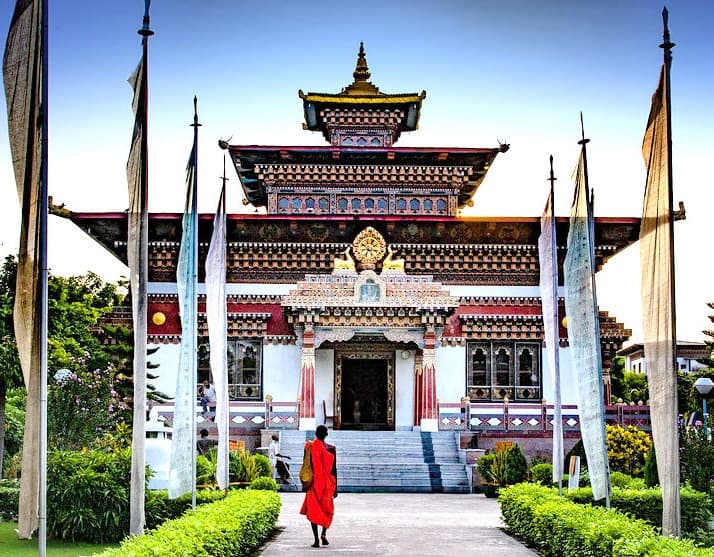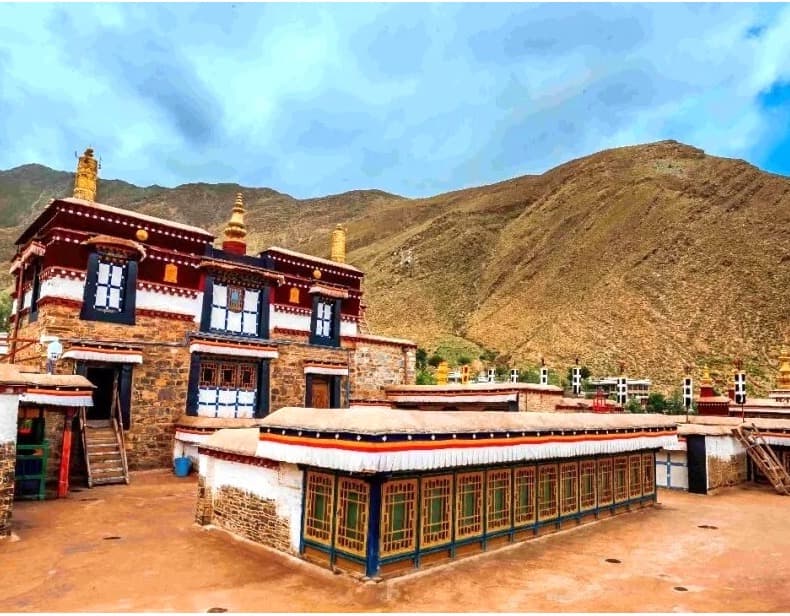Experience the magic of a Bhutan photography tour, where the enchanting beauty of this Himalayan kingdom offers a perfect canvas for photographers. Discover the top photography spots in Bhutan, from the breathtaking heights of the Paro Taktsang to the serene valleys of Bumthang. As one of the best destinations for photographers in Bhutan, the country provides a rich tapestry of Bhutan travel photography locations and iconic photography sites, each offering unique perspectives and captivating images. With its scenic landscapes, vibrant festivals, and cultural landmarks, Bhutan is a treasure trove for those passionate about Bhutan landscape photography. Explore the must-visit places for photographers in Bhutan, and gain insights into capturing Bhutan's beauty with practical Bhutan travel photography tips to enhance your journey whether you are a seasoned photographer or a passionate amateur, exploring Bhutan through photography promises unforgettable experiences and awe-inspiring images.
At Druk Holidays, we pride ourselves on being the best choice for exploring the top 10 destinations in Bhutan for a photography tour. Our deep knowledge of Bhutan travel photography locations and commitment to providing exceptional experiences set us apart. We offer carefully curated itineraries that highlight the top photography spots in Bhutan, ensuring you capture the most stunning landscapes and vibrant cultural scenes. With our expertise, you'll have access to iconic photography sites in Bhutan, from the majestic Paro Taktsang to the tranquil beauty of Phobjikha Valley. Our guides are passionate about photography and will provide you with valuable insights and Bhutan travel photography tips to help you make the most of your journey. Whether you are an amateur photographer or a seasoned professional, Druk Holidays is dedicated to helping you capture Bhutan's beauty and create unforgettable memories through your lens. Choose us for a unique and enriching Bhutan photography tour showcasing this enchanting kingdom's best.
Paro Valley
Paro Valley is a must-visit destination for photographers exploring Bhutan. Known for its stunning natural beauty and rich cultural heritage, Paro offers a wealth of photographic opportunities:
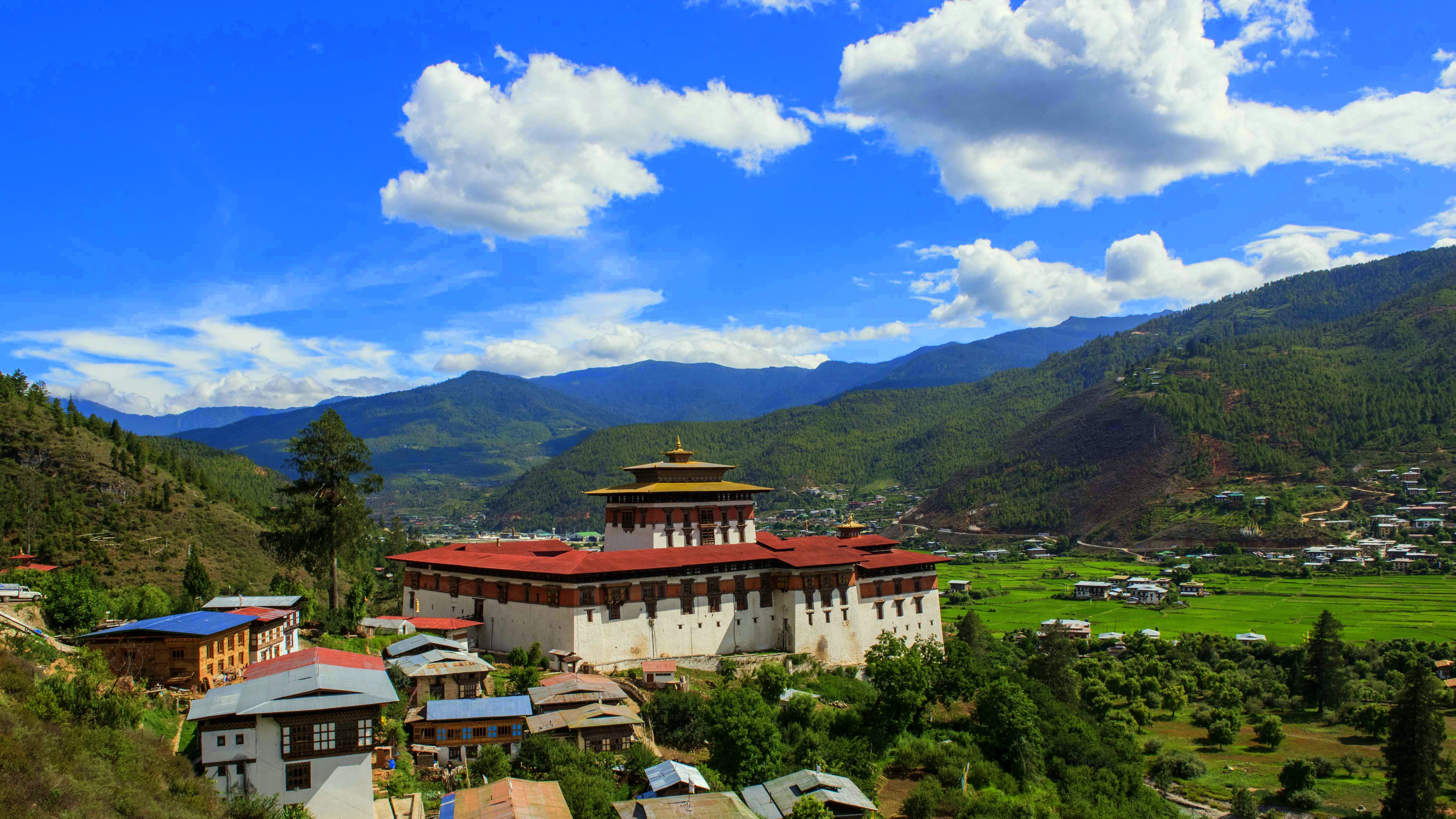
- Iconic Photography Site: Paro Taktsang (Tiger's Nest Monastery) is the crown jewel of Paro Valley. Perched precariously on a cliffside, this iconic monastery provides dramatic and breathtaking views. Capturing the monastery against the backdrop of the rugged Himalayan landscape is a highlight of any Bhutan photography tour.
- Cultural Photography: Rinpung Dzong, the fortress-like monastery and administrative center, showcases traditional Bhutanese architecture. Its imposing structure and beautiful courtyards make it a perfect subject for capturing the essence of Bhutanese heritage.
- Scenic Landscapes: The valley is surrounded by lush green forests and rolling hills, providing picturesque settings for Bhutan scenic photography. The contrast of the deep blue sky with the verdant landscape offers ample opportunities for creating stunning landscape shots.
- Local Life: The charming town of Paro, with its traditional wooden houses and vibrant local market, provides an authentic glimpse into everyday life in Bhutan. The vibrant colors and lively atmosphere are ideal for cultural photography in Bhutan.
- Festivals: If you visit during one of Paro's festivals, such as the Paro Tsechu, you'll have the chance to capture traditional dances, colorful costumes, and the festive spirit of the local people. These events add a dynamic element to your photography in Bhutan’s valleys.
Paro Valley combines natural beauty with cultural richness, making it one of the top photography spots in Bhutan. Whether you are capturing the iconic Tiger's Nest or everyday life in Paro town, the valley offers a diverse range of Bhutan travel photography locations.
Thimphu
Thimphu, the vibrant capital of Bhutan, is a treasure trove of photographic opportunities, blending traditional charm with modernity. As one of the top photography spots in Bhutan, Thimphu offers a diverse range of subjects:
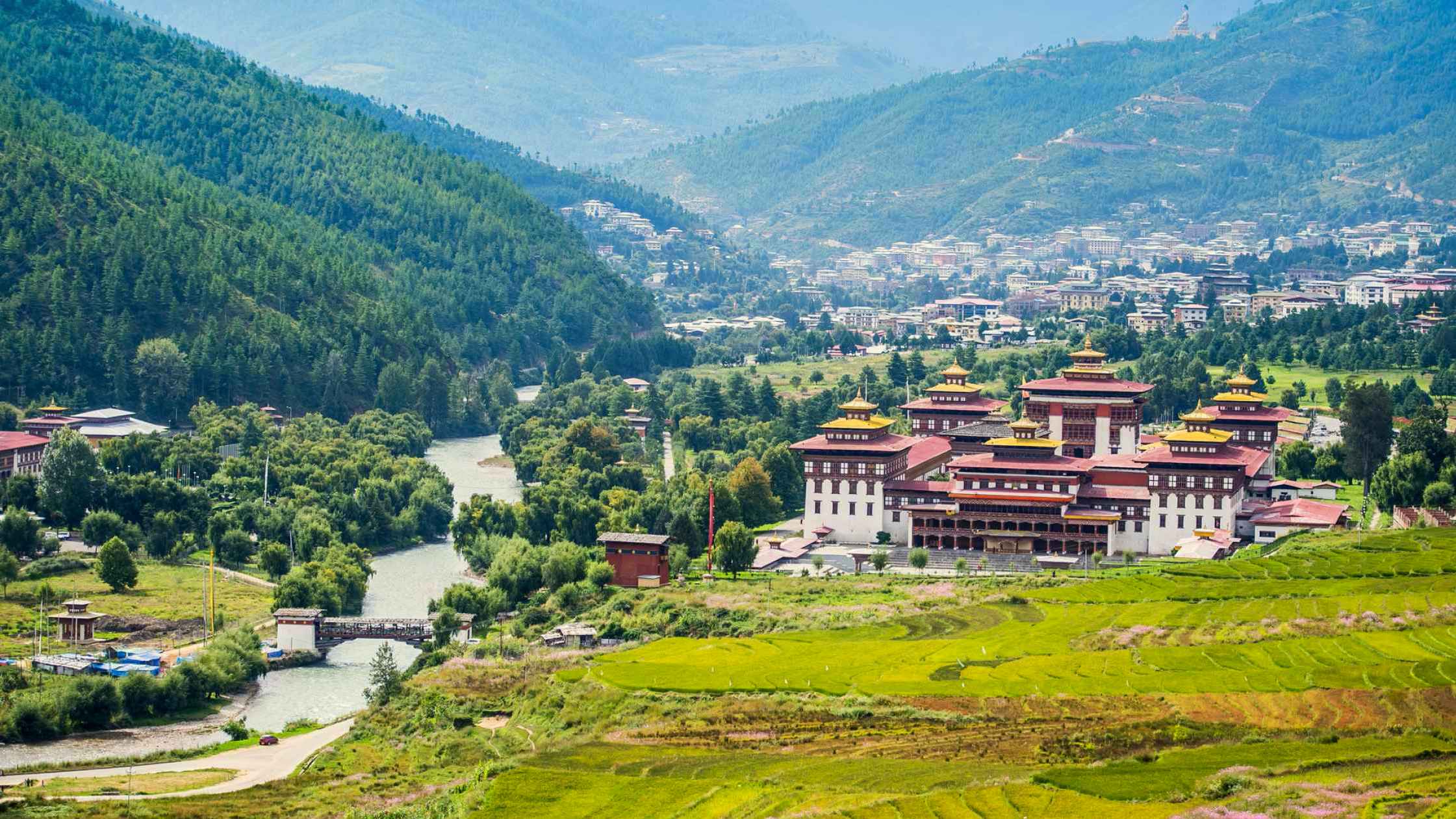
- Iconic Photography Site: The Buddha Dordenma statue, towering over the valley, is a striking subject for Bhutan landscape photography. Its immense size and serene presence against the backdrop of the Thimphu Valley make for awe-inspiring shots.
- Historic Architecture: Tashichho Dzong, the seat of the government and the summer residence of the monk body, is a quintessential example of Bhutanese architecture. The dzong’s intricate design and imposing structure are ideal for cultural photography in Bhutan.
- Local Markets: The Weekend Market in Thimphu offers a lively and colorful scene. Here, you can photograph the bustling activity, local produce, and traditional crafts, providing a vibrant glimpse into Bhutanese daily life.
- Festivals: Thimphu is home to several festivals, including the Thimphu Tshechu, where traditional dances and colorful costumes create dynamic photographic opportunities. Capturing the energy and traditions of these festivals adds depth to your photography in Bhutan’s valleys.
- Cultural Landmarks: Visit Motithang Takin Preserve, where you can photograph the unique takin, Bhutan’s national animal, in a natural setting. The preserve offers a chance to capture wildlife and the serene landscape surrounding it.
- Urban Landscapes: Thimphu’s blend of traditional and modern elements provides a unique contrast, ideal for capturing the essence of Bhutan’s evolving urban landscape. From traditional wooden houses to contemporary buildings, Thimphu showcases a fascinating juxtaposition.
Thimphu stands out as one of Bhutan’s best photography destinations, offering a rich tapestry of subjects from grand religious monuments to lively street scenes. Its combination of historical significance, cultural vibrancy, and stunning landscapes makes it an essential stop on any Bhutan photography tour.
Punakha
Punakha is a captivating destination that offers a wealth of opportunities for photographers, blending spectacular landscapes with rich cultural heritage. As one of the top photography spots in Bhutan, Punakha provides a variety of stunning subjects:
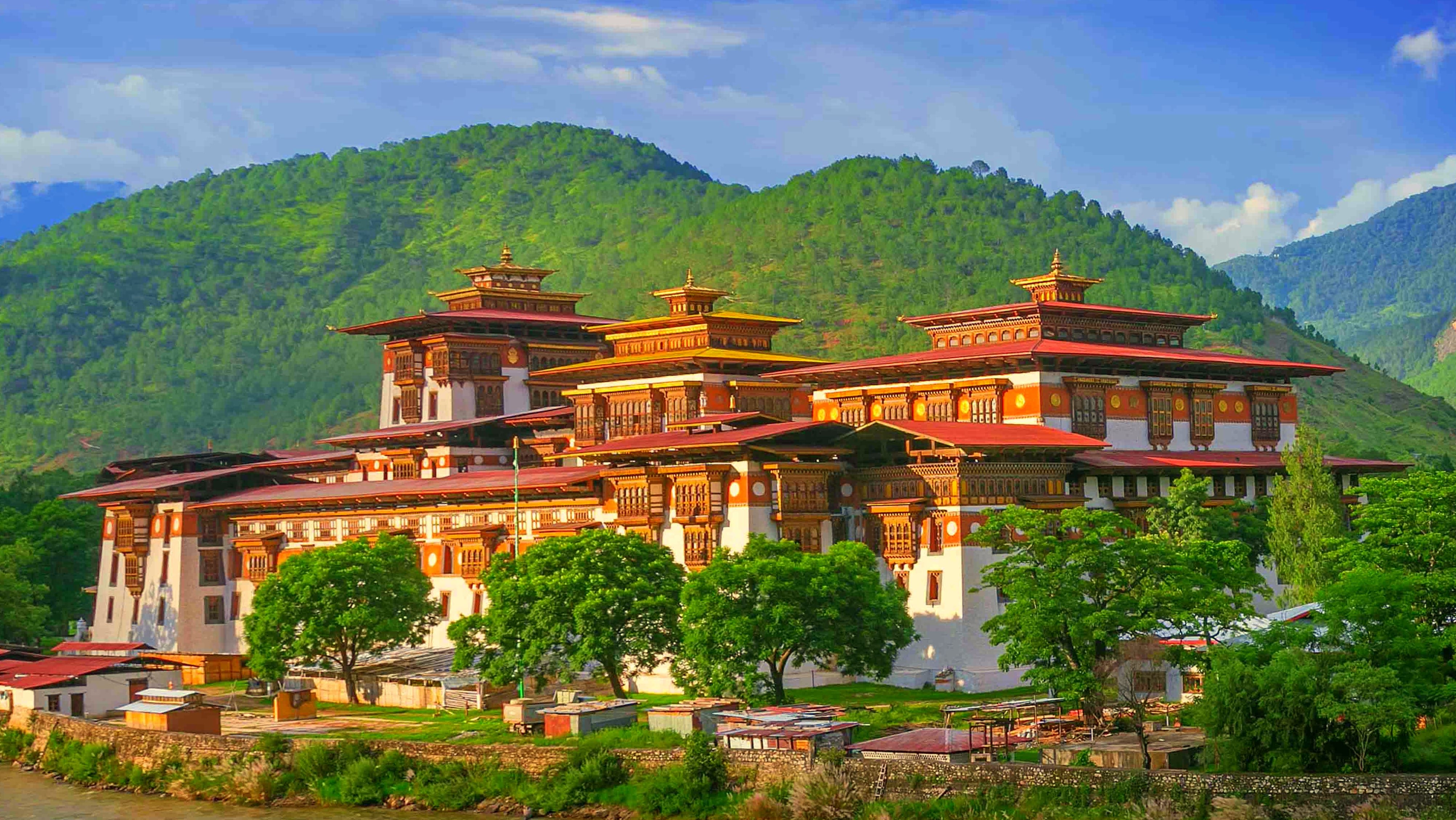
- Iconic Photography Site: The Punakha Dzong, located at the confluence of the Pho Chhu and Mo Chhu rivers, is a standout feature of the valley. Its majestic architecture, set against a backdrop of lush green hills and the winding rivers, provides a dramatic and picturesque setting for Bhutan landscape photography.
- Seasonal Beauty: During the winter months, the dzong's setting becomes even more striking with the snow-capped peaks in the distance. The vibrant colors of the dzong’s intricate murals and the surrounding scenery make it a perfect subject for capturing stunning landscapes Bhutan photography.
- Cultural Festivals: The Punakha Tshechu festival, held annually, is a vibrant celebration of Bhutanese culture. The colorful traditional dances, elaborate costumes, and festive atmosphere offer dynamic opportunities for cultural photography in Bhutan.
- Scenic Landscapes: The scenic beauty of the Punakha Valley is enhanced by terraced fields, traditional Bhutanese villages, and serene river views. These elements contribute to the valley’s charm and are ideal for capturing Bhutan travel photography locations.
- Local Life: Photograph the everyday life of the local people, including traditional farming practices and local markets. The authentic rural scenes provide a rich context for exploring photography in Bhutan’s valleys.
- Outdoor Adventures: The Wangdue Phodrang region, accessible from Punakha, offers additional photographic opportunities. Capture the dramatic landscapes and traditional architecture of the area, including the historic Wangdue Dzong.
Punakha is renowned for its combination of architectural grandeur and natural beauty, making it one of Bhutan’s best photography destinations. Whether you’re capturing the iconic Punakha Dzong, the vibrant festival scenes, or the serene landscapes, Punakha offers a diverse range of subjects for any photographer.
Haa Valley
Haa Valley is one of Bhutan's most enchanting and less-traveled destinations, offering a unique blend of pristine natural beauty and rich cultural heritage. As a top choice for photography tours in Bhutan, Haa Valley presents a range of captivating subjects:
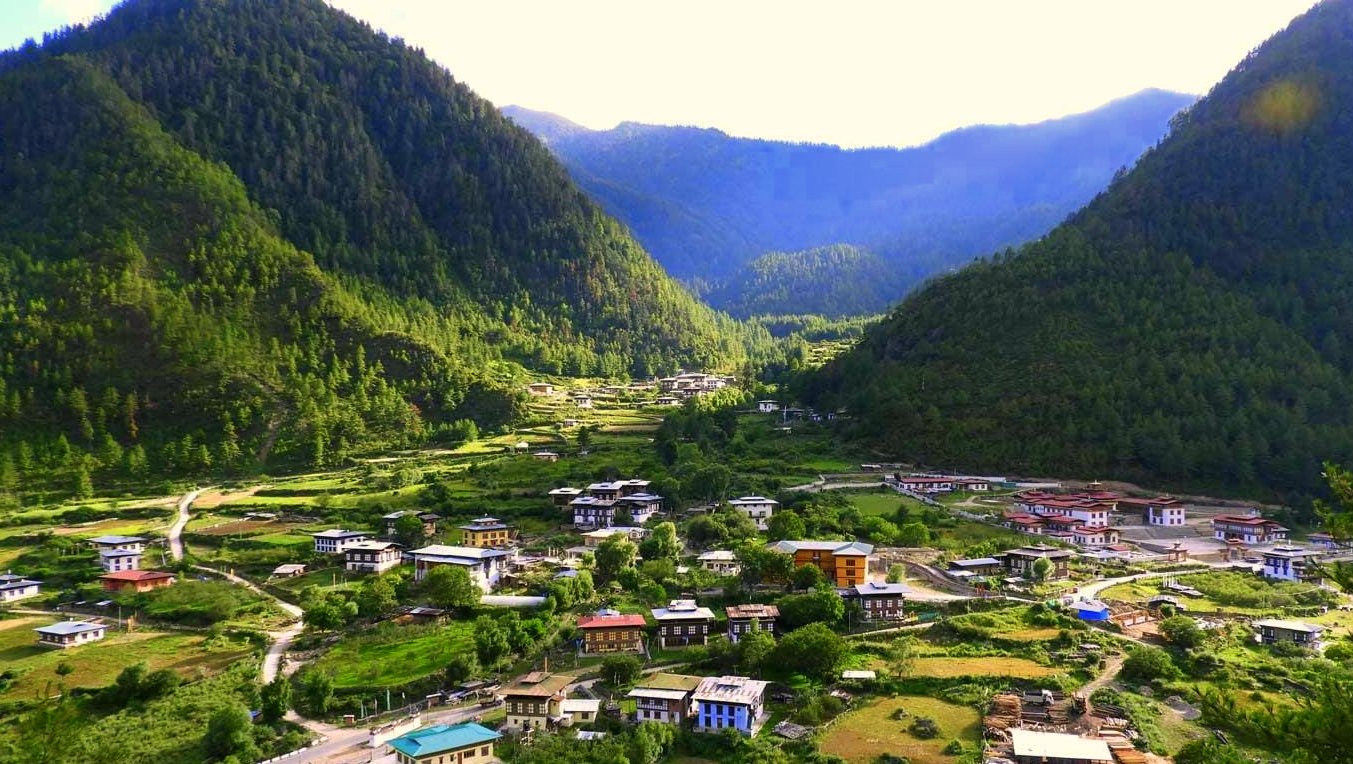
- Scenic Landscapes: The valley’s breathtaking vistas include rolling hills, verdant meadows, and dramatic mountain backdrops. The wide-open spaces and stunning views are ideal for capturing stunning landscapes Bhutan photography. The natural beauty of Haa Valley is perfect for wide-angle shots and panoramic views.
- Iconic Photography Site: The Haa Dzong, although less frequented than other dzongs, offers a serene and picturesque setting. Its traditional Bhutanese architecture against the backdrop of the valley’s natural scenery makes for compelling photographs.
- Cultural Festivals: The Haa Summer Festival is a highlight for photographers interested in cultural events. This festival showcases traditional Bhutanese dances, local customs, and vibrant attire, offering dynamic opportunities for cultural photography in Bhutan.
- Local Life: The rural charm of Haa Valley, with its traditional houses and local markets, provides a genuine glimpse into everyday Bhutanese life. The interactions with local villagers and their traditional practices offer rich material for photography in Bhutan’s valleys.
- Outdoor Exploration: The valley’s hiking trails and outdoor activities offer additional photographic opportunities. Capture the scenic beauty of hiking routes and the unique flora and fauna of the region.
- Cultural Heritage: Visit ancient temples and monasteries in the valley, such as the Lhakhang Karpo and Lhakhang Nagpo, which offer insights into Bhutanese spirituality and architecture. These sites add a historical dimension to your Bhutan travel photography locations.
Haa Valley stands out as a hidden gem among Bhutan’s best photography destinations, offering a blend of serene landscapes, cultural richness, and authentic local experiences. Whether you’re photographing the natural beauty or the vibrant cultural festivals, Haa Valley provides a memorable and visually stunning experience for any photographer.
Bumthang Valley
Bumthang Valley is a captivating destination renowned for its spiritual significance and stunning landscapes, making it a top choice for photography tours in Bhutan. As one of the best destinations for photographers in Bhutan, Bumthang offers a range of unique photographic opportunities:
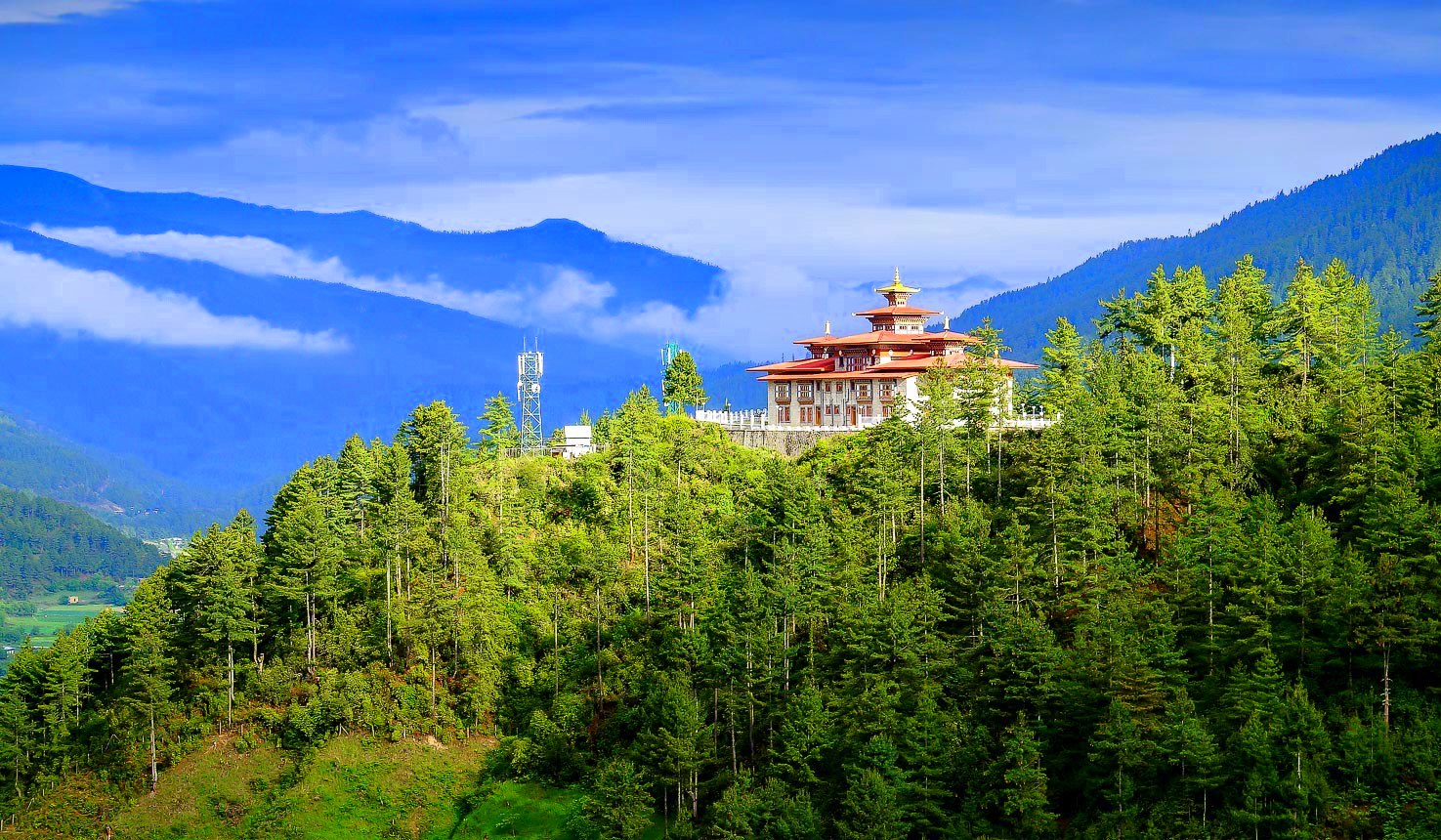
- Spiritual Landmarks: Jambay Lhakhang and Kurjey Lhakhang are two of the most revered monasteries in Bhutan, providing a rich subject for cultural photography in Bhutan. The intricate architecture, religious art, and serene surroundings offer compelling shots that capture the spiritual essence of the valley.
- Scenic Beauty: The valley’s rolling hills, terraced fields, and ancient trees create picturesque landscapes ideal for Bhutan landscape photography. The contrast of traditional Bhutanese structures against the natural scenery enhances the visual appeal of your photographs.
- Local Festivals: Bumthang’s Jambay Lhakhang Drup is a vibrant festival featuring traditional dances, colorful costumes, and cultural rituals. Capturing the dynamic energy of this festival provides a rich opportunity for capturing Bhutan's beauty and showcasing Bhutanese traditions.
- Traditional Villages: The charming villages in Bumthang, with their traditional Bhutanese architecture and friendly locals, offer authentic glimpses into rural life. Photograph the traditional farming practices, local festivals, and community interactions for a deeper understanding of Bhutanese culture.
- Nature Trails: The valley’s scenic hiking trails, such as those leading to Ngang Lhakhang, offer panoramic views and unique opportunities for stunning landscapes Bhutan photography. The natural beauty and tranquility of these trails make for excellent photographic subjects.
- Historic Sites: Visit historical sites like the Membartso (Burning Lake), a sacred pilgrimage site, which offers a combination of spiritual significance and natural beauty. The lake’s reflections and surrounding landscape provide a serene backdrop for photography.
Bumthang Valley is a treasure trove for photographers, blending spiritual heritage with breathtaking natural scenery. Whether you're capturing the architectural marvels of ancient monasteries or the vibrant scenes of local festivals, Bumthang offers a diverse and rewarding experience for any photography enthusiast.
Phobjikha Valley
Phobjikha Valley is a serene and picturesque destination in Bhutan, celebrated for its natural beauty and unique wildlife. As a top spot for photography tours in Bhutan, Phobjikha offers a variety of captivating subjects:
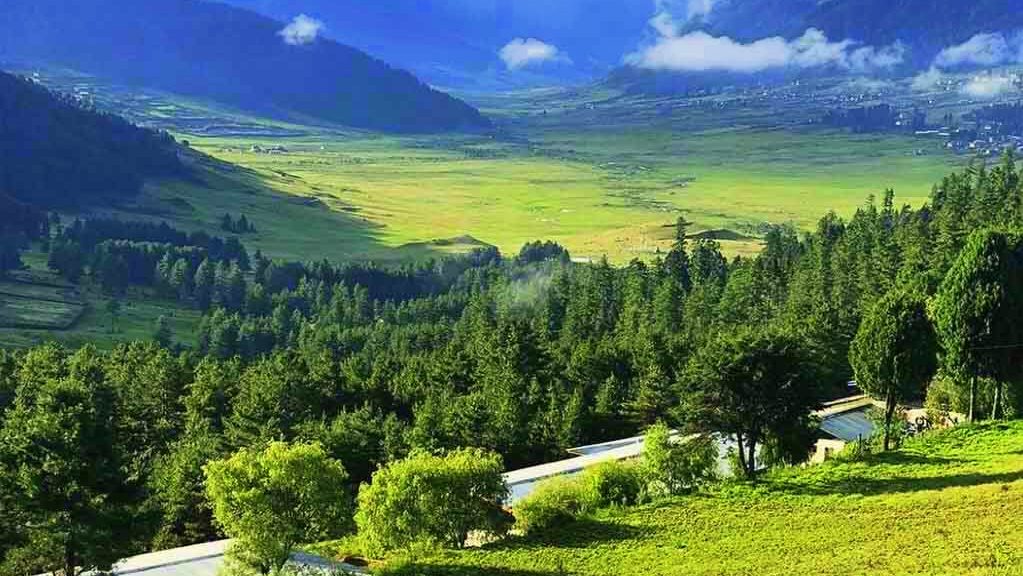
- Iconic Photography Site: The valley is renowned for its black-necked cranes, which migrate to the area during the winter months. These majestic birds provide stunning subjects for Bhutan landscape photography and wildlife photography. Capture their graceful flight against the backdrop of the valley’s rolling hills and pristine meadows.
- Scenic Landscapes: The expansive meadows and lush forests of Phobjikha create a tranquil setting ideal for stunning landscapes Bhutan photography. The valley’s sweeping vistas and the contrast of green fields with distant mountains make for compelling and expansive landscape shots.
- Cultural Heritage: Gangtey Monastery, perched on a hill overlooking the valley, is a significant cultural and architectural landmark. Its traditional Bhutanese design and panoramic views of the surrounding landscape offer rich opportunities for cultural photography in Bhutan.
- Local Life: The valley’s small villages and traditional homes provide authentic glimpses into rural Bhutanese life. Photograph local customs, traditional farming practices, and daily life to capture the essence of Bhutanese culture.
- Festivals: The Gangtey Tshechu, held annually at Gangtey Monastery, is a vibrant festival featuring traditional dances and rituals. This colorful event offers dynamic opportunities for capturing Bhutan’s beauty and documenting cultural celebrations.
- Nature Trails: The valley’s numerous hiking trails, including those around the Phobjikha Nature Trail, offer scenic routes through forests and meadows. These trails provide excellent opportunities for capturing the natural beauty and tranquility of the region.
Phobjikha Valley stands out as one of Bhutan’s best photography destinations, offering a blend of wildlife, natural beauty, and cultural heritage. Whether you are photographing the iconic black-necked cranes or the stunning landscapes, Phobjikha provides a serene and inspiring setting for any photographer.
Trongsa
Trongsa is a historically rich and visually captivating destination in Bhutan, offering a wealth of photographic opportunities. As one of the top photography spots in Bhutan, Trongsa provides a diverse range of subjects for photographers:
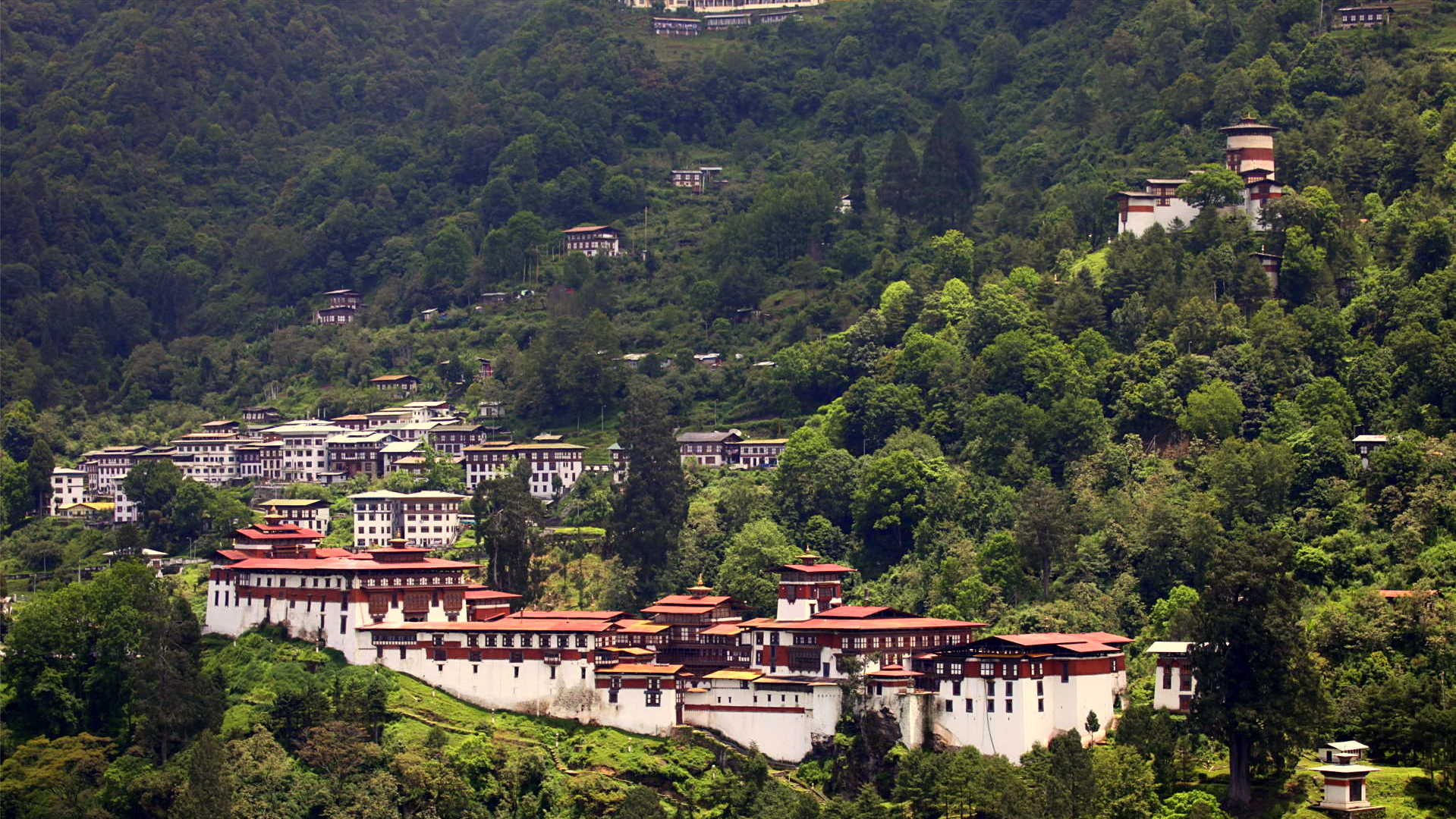
- Iconic Photography Site: The Trongsa Dzong, a majestic fortress perched on a ridge overlooking the Mangde Chhu River, is a centerpiece of Bhutanese architecture. Its grand structure and commanding views make it a prime subject for Bhutan landscape photography. The dzong’s intricate design and historical significance add depth to your images.
- Historic Significance: As the ancestral home of the Bhutanese royal family, Trongsa holds great historical and cultural importance. Capturing the dzong and its surrounding landscape offers a glimpse into Bhutan’s royal heritage and traditional architecture, perfect for cultural photography in Bhutan.
- Scenic Views: The surrounding mountains and valleys provide stunning backdrops for stunning landscapes Bhutan photography. The elevated views from Trongsa Dzong offer panoramic perspectives of the rugged terrain and lush valleys.
- Local Life: The town of Trongsa itself, with its traditional buildings and local markets, provides an authentic view of rural Bhutanese life. Photograph the daily activities, local crafts, and the vibrant community to capture the essence of life in this historic town.
- Festivals: During local festivals such as the Trongsa Tsechu, the town comes alive with traditional dances, colorful costumes, and vibrant celebrations. These events provide dynamic opportunities for capturing Bhutan’s beauty and documenting Bhutanese cultural traditions.
- Nature Trails: Explore the nature trails and surrounding forests, which offer additional photographic opportunities. The natural beauty and serene environment of the area complement the historical and cultural sites, creating a well-rounded experience for photographers.
Trongsa is a treasure trove for photographers, blending historical grandeur with natural beauty. Whether you are capturing the iconic Trongsa Dzong, the scenic landscapes, or the vibrant local festivals, Trongsa offers a rich and rewarding experience for any photography enthusiast.
Trashigang
Trashigang is a vibrant and culturally rich region in eastern Bhutan, offering a range of photographic opportunities. As one of the top photography spots in Bhutan, Trashigang presents a variety of captivating subjects for photographers:
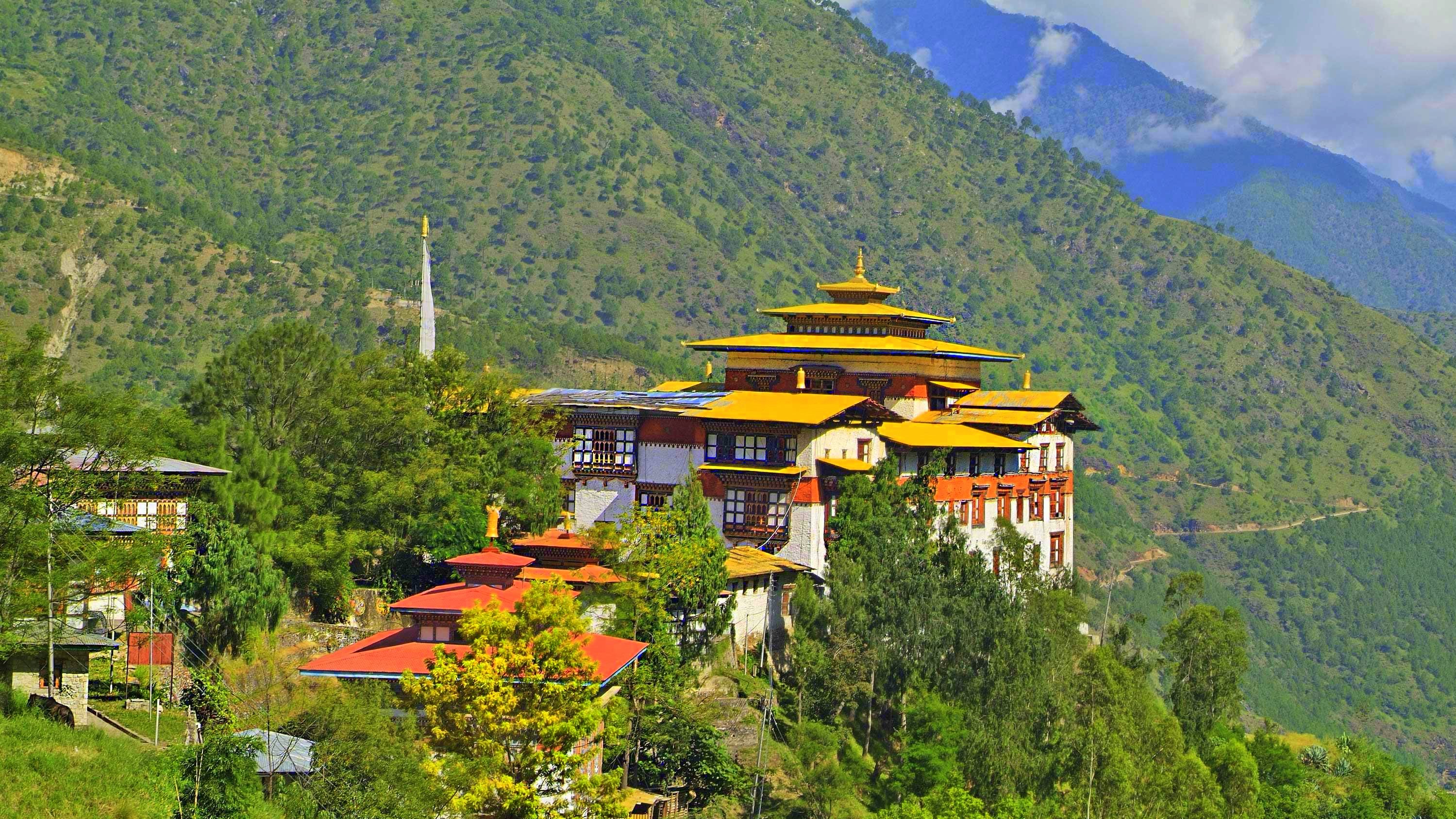
- Iconic Photography Site: The Trashigang Dzong, a massive fortress overlooking the Drangme Chhu River, is a standout feature of the region. Its imposing structure and scenic location make it an ideal subject for Bhutan landscape photography. The dzong’s traditional Bhutanese architecture, combined with its dramatic setting, provides striking photographic compositions.
- Cultural Heritage: Trashigang’s historical significance is evident in its architecture and local traditions. The dzong serves as a center for both administrative and religious activities, offering rich material for cultural photography in Bhutan. Documenting the intricate details of the dzong and its surroundings provides insight into Bhutanese heritage.
- Local Festivals: Trashigang hosts several vibrant festivals throughout the year, including the Trashigang Tsechu. This festival features traditional dances, colorful costumes, and festive activities, offering dynamic opportunities for capturing Bhutan’s beauty and documenting local cultural celebrations.
- Scenic Landscapes: The region’s diverse landscapes, including terraced fields, rolling hills, and distant mountain ranges, are perfect for stunning landscapes Bhutan photography. The contrast between the lush greenery and the rugged terrain creates visually compelling scenes.
- Traditional Villages: The surrounding villages in Trashigang offer a glimpse into rural Bhutanese life. Capture the traditional wooden houses, local markets, and daily activities to convey the authentic experience of living in this remote region. These elements provide rich material for photography in Bhutan’s valleys.
- Nature Trails: Explore the natural beauty of Trashigang through its hiking trails and outdoor areas. The serene environment and picturesque views enhance the overall photographic experience, allowing for shots that capture both nature and culture.
Trashigang stands out as one of Bhutan’s best photography destinations, offering a blend of historical grandeur, vibrant festivals, and stunning landscapes. Whether photographing the iconic dzong, the lively festivals, or the picturesque countryside, Trashigang provides a diverse and enriching experience for any photography enthusiast.
Lhuentse
Lhuentse is a hidden gem in eastern Bhutan, renowned for its stunning natural landscapes and rich cultural heritage. As one of the top photography spots in Bhutan, Lhuentse offers a range of captivating subjects for photographers:
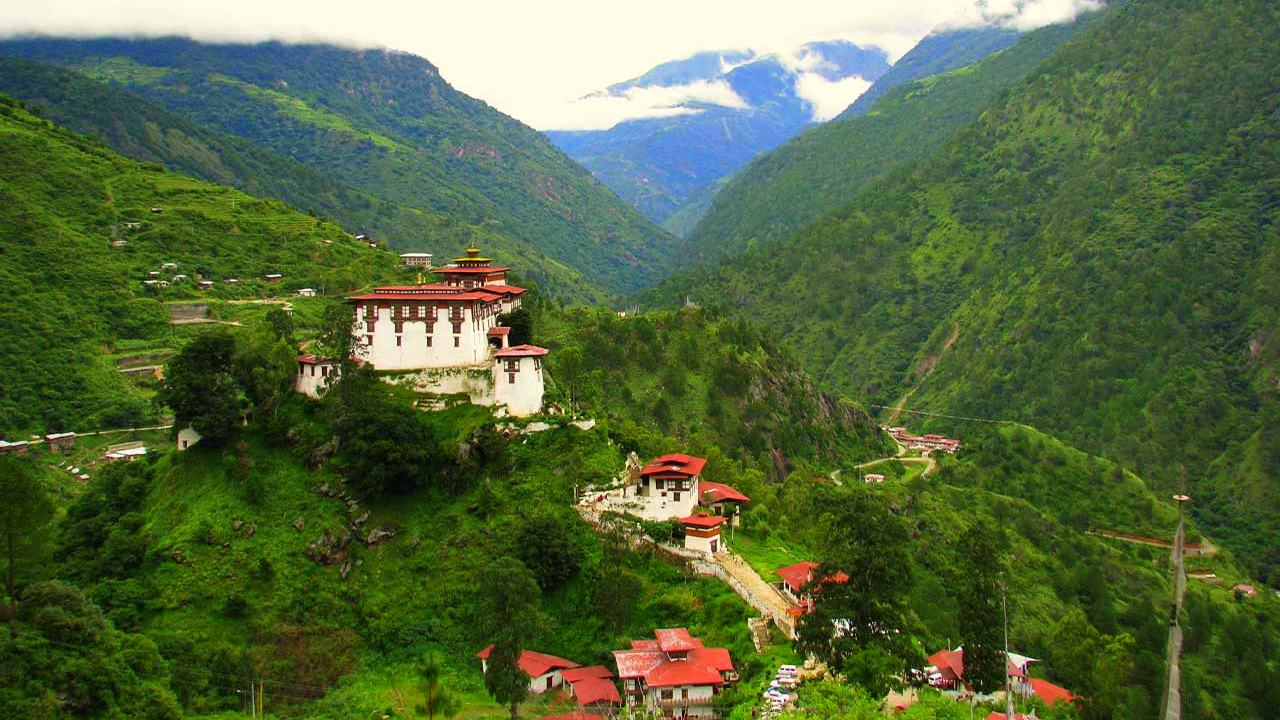
- Iconic Photography Site: The Lhuentse Dzong is a standout feature of the region, perched on a hill overlooking the Kurichhu River. Its traditional Bhutanese architecture, set against a backdrop of rolling hills and dense forests, provides a dramatic and picturesque setting for Bhutan landscape photography.
- Cultural Heritage: Lhuentse is known for its vibrant cultural traditions and festivals. The Lhuentse Tsechu, an annual festival held at the dzong, features traditional dances, colorful costumes, and ceremonial rituals. These events offer dynamic opportunities for cultural photography in Bhutan, capturing the essence of local traditions and celebrations.
- Traditional Textiles: Lhuentse is famous for its textile traditions, particularly the weaving of traditional Bhutanese fabrics. Photograph the intricate patterns and vibrant colors of locally woven textiles to document Bhutan’s rich textile heritage. This aspect adds a unique dimension to your photography in Bhutan’s valleys.
- Scenic Landscapes: The surrounding landscapes of Lhuentse are characterized by rugged mountains, terraced fields, and lush forests. These elements create stunning vistas ideal for stunning landscapes Bhutan photography. The interplay of natural beauty and traditional architecture provides excellent photographic opportunities.
- Local Villages: Explore the traditional villages in Lhuentse, where you can photograph everyday life, local markets, and traditional wooden houses. These images offer an authentic glimpse into the rural lifestyle and cultural practices of the region.
- Nature Trails: The region’s nature trails and outdoor areas offer serene and picturesque settings for photography. Capture the tranquil beauty of the forests and river valleys as you explore the natural landscapes of Lhuentse.
Lhuentse stands out as one of Bhutan’s best photography destinations, blending historical significance with breathtaking natural beauty. Whether you’re capturing the iconic dzong, vibrant festivals, traditional textiles, or serene landscapes, Lhuentse provides a rich and rewarding experience for any photography enthusiast.
Mongar
Mongar is a dynamic and culturally vibrant region in eastern Bhutan, offering a range of photographic opportunities that capture the essence of Bhutanese life and landscape. As one of the top photography spots in Bhutan, Mongar provides a diverse array of subjects for photographers:
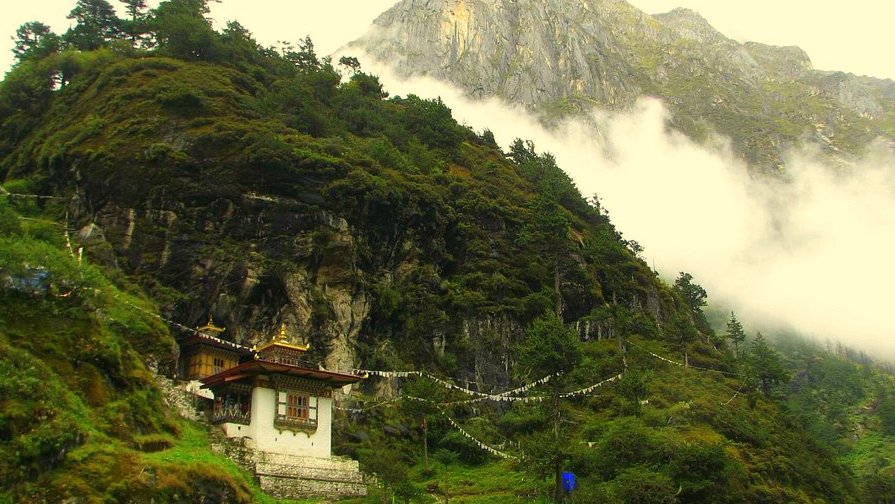
- Iconic Photography Site: The Mongar Dzong, a striking fortress located on a hilltop, is a prominent feature of the region. Its traditional Bhutanese architecture and elevated position offer impressive views and make for compelling subjects in Bhutan landscape photography. The dzong’s intricate details and commanding presence against the surrounding landscape provide excellent photographic opportunities.
- Cultural Heritage: Mongar is known for its rich cultural traditions and vibrant festivals. The Mongar Tsechu, an annual festival held at the dzong, showcases traditional dances, colorful costumes, and local rituals. These cultural events offer dynamic chances for cultural photography in Bhutan, capturing the spirit of Bhutanese festivals and traditions.
- Scenic Landscapes: The region’s diverse landscapes, including terraced fields, rolling hills, and forested areas, offer stunning backdrops for stunning landscapes Bhutan photography. The dramatic interplay between the natural scenery and traditional Bhutanese structures creates visually captivating scenes.
- Traditional Villages: Mongar’s traditional villages and rural settings provide authentic glimpses into daily Bhutanese life. Photograph local markets, traditional wooden houses, and agricultural practices to capture the essence of rural life in Bhutan. These elements contribute to a rich portfolio of photography in Bhutan’s valleys.
- Nature Trails: Explore the nature trails and scenic routes around Mongar, which offer serene and picturesque settings. The natural beauty of the region, including forests and river valleys, enhances the overall photographic experience and provides opportunities for capturing the tranquil side of Bhutan.
- Local Crafts: Mongar is also known for its traditional crafts and textiles. Capture the intricate designs and vibrant colors of locally made textiles and crafts, adding a unique dimension to your Bhutan travel photography locations.
Mongar stands out as one of Bhutan’s best photography destinations, offering a blend of historical grandeur, cultural vibrancy, and natural beauty. Whether you’re photographing the iconic dzong, vibrant festivals, traditional villages, or scenic landscapes, Mongar provides a diverse and enriching experience for any photography enthusiast.
Best Time to Visit Bhutan for a Photography Tour
Bhutan's diverse landscapes and rich cultural heritage offer unique photographic opportunities throughout the year. Each season presents distinct elements that enhance the beauty of Bhutan, making it an ideal destination for photography enthusiasts. Here’s a seasonal guide to help you plan the perfect time for your photography tour in Bhutan:
Spring (March to May)
- Weather: Spring in Bhutan features mild temperatures ranging from 15°C to 25°C (59°F to 77°F) and clear skies. This pleasant weather is perfect for outdoor activities.
- Scenic Beauty: The landscape comes alive with vibrant blooms of rhododendrons, magnolias, and other spring flowers. These colorful settings are ideal for stunning landscapes Bhutan photography.
- Festivals: Experience vibrant festivals like the Paro Tsechu, where traditional dances and colorful costumes provide dynamic opportunities for cultural photography in Bhutan.
Summer (June to August)
- Weather: Summer brings warmer temperatures between 20°C to 30°C (68°F to 86°F) and the monsoon season. Expect occasional heavy rainfall, particularly in the southern regions.
- Scenic Beauty: The lush greenery intensified by the monsoon rains makes for striking photographic opportunities. Full rivers and dramatic waterfalls enhance your Bhutan landscape photography.
- Festivals: While summer is less festival-heavy, the lush landscapes and fewer tourists offer a unique chance to capture local life and verdant scenery.
Autumn (September to November)
- Weather: Autumn offers clear skies and comfortable temperatures ranging from 15°C to 25°C (59°F to 77°F). This season is known for its pleasant weather and excellent visibility.
- Scenic Beauty: The clear, crisp air and changing foliage create a warm, golden glow across the landscape, perfect for stunning landscapes Bhutan photography.
- Festivals: Major festivals such as the Thimphu Tsechu and Punakha Tsechu occur in autumn, providing vibrant and colorful scenes for cultural photography in Bhutan.
Winter (December to February)
- Weather: Winter temperatures range from 0°C to 15°C (32°F to 59°F), with colder conditions in higher altitudes. The season is generally dry and clear.
- Scenic Beauty: Snow-capped peaks and frosty landscapes create a serene and picturesque setting, ideal for Bhutan landscape photography. The crisp air enhances the beauty of the snow-covered scenery.
- Festivals: Winter festivals like the Punakha Tsechu offer a unique backdrop for traditional dance performances and ceremonies in cooler weather.
Each season in Bhutan offers a distinct and captivating experience for photographers. From the vibrant colors of spring and the lush landscapes of summer to the crisp autumn air and serene winter snowscapes, Bhutan’s changing seasons provide a rich tapestry of scenes to capture. Planning your visit according to the season will ensure you experience and photograph the best that Bhutan has to offer.
Essential Tips for the Top 10 Destinations in Bhutan for Photography Tour
A photography tour in Bhutan offers a wealth of opportunities to capture stunning landscapes, vibrant festivals, and rich cultural heritage. To make the most of your experience, consider these essential tips for photographing Bhutan’s top destinations:
Research and Plan Ahead
- Know Your Destinations: Familiarize yourself with each destination’s unique features and cultural significance. Research the best times for photography and the key landmarks you want to capture.
- Permits and Regulations: Ensure you have the necessary permits for photography, especially in protected areas and religious sites. Respect local regulations and guidelines.
Pack the Right Gear
- Camera Equipment: Bring a DSLR or mirrorless camera with a variety of lenses, including wide-angle and zoom lenses. A tripod is essential for low-light conditions and capturing landscapes.
- Accessories: Carry spare batteries, memory cards, and a lens cleaning kit. Consider packing a weatherproof cover for your gear to protect it from the elements.
Respect Local Culture
- Permission: Always ask for permission before photographing people, particularly in rural areas and during festivals. Be respectful of local customs and traditions.
- Sensitive Sites: Avoid taking photographs in restricted areas such as inside temples or monasteries unless explicitly permitted.
Capture the Right Moments
- Golden Hours: Shoot during the golden hours—shortly after sunrise and before sunset—for the best lighting conditions and to capture the landscape in its most flattering light.
- Festivals and Events: Plan your visit around local festivals to capture the vibrant colors and cultural activities. Be prepared for crowds and plan your shots accordingly.
Focus on Details
- Architectural Features: Pay attention to intricate details in traditional Bhutanese architecture, such as carvings, paintings, and structural designs.
- Nature and Wildlife: Capture the unique flora and fauna, including the black-necked cranes in Phobjikha Valley and the diverse landscapes of the high altitudes.
Adapt to Weather Conditions
- Weather Preparation: Be prepared for varying weather conditions. Bring protective gear for your camera and dress in layers to stay comfortable in different climates.
- Weather-Dependent Shots: Take advantage of misty mornings, clear skies, or dramatic weather conditions to add mood and atmosphere to your photographs.
Learn Local Customs
- Cultural Sensitivity: Understanding and respecting Bhutanese customs can enhance your interactions with locals and lead to more authentic photographs.
- Local Guides: Consider hiring local guides who can provide insights into the best photography spots and cultural contexts.
Travel Light
- Essentials Only: While packing, prioritize essential gear and minimize weight. Bhutan’s rugged terrain may require you to carry your equipment over uneven paths.
- Comfortable Clothing: Wear comfortable and weather-appropriate clothing suitable for trekking and outdoor activities.
Practice Patience
- Wait for the Right Moment: Sometimes the best shots require waiting for the perfect light or moment. Be patient and observe the scene to capture the most compelling images.
- Be Flexible: Be prepared to adapt your plans based on weather conditions and local happenings.
Enjoy the Experience
- Immerse Yourself: Take time to enjoy the beauty and culture of Bhutan. Engaging with the local environment and people will enrich your photography and create memorable experiences.
- Reflect and Share: After your tour, reflect on your experiences and share your photographs to inspire others and showcase Bhutan’s stunning landscapes and vibrant culture.
These tips will help you make the most of your photography tour in Bhutan, ensuring that you capture the best of the country's scenic beauty, cultural heritage, and unique landscapes.
A photography tour in Bhutan promises an unforgettable experience, offering a wealth of stunning landscapes, vibrant festivals, and rich cultural heritage to capture. From the majestic dzongs and lively festivals to the serene natural beauty, each of the top 10 destinations provides unique and inspiring photographic opportunities. By planning your visit according to the best times, packing the right gear, and respecting local customs, you can truly capture the essence of Bhutan. Embrace the journey, enjoy the diverse scenes, and let your lens reveal the breathtaking beauty of this Himalayan kingdom.
FAQs Of the Top 10 Destinations in Bhutan for Photography Tour
Q: What is the best time of year to visit Bhutan for a photography tour?
A: The best times are during spring (March to May) and autumn (September to November). Spring offers vibrant floral blooms, while autumn provides clear skies and stunning foliage. Summer (June to August) features lush greenery and dramatic waterfalls, and winter (December to February) offers snow-capped peaks and crisp air.
Q: Do I need a permit for photography in Bhutan?
A: Yes, permits may be required for photography in certain areas, especially religious sites and protected regions. It is important to obtain the necessary permissions and follow local regulations to respect cultural and environmental guidelines.
Q: What camera gear should I bring for a photography tour in Bhutan?
A: Bring a DSLR or mirrorless camera with a variety of lenses, including wide-angle and zoom lenses. Essential accessories include a tripod, spare batteries, memory cards, and a weatherproof cover for your equipment.
Q: Are there any cultural sensitivities I should be aware of while photographing in Bhutan?
A: Yes, always ask for permission before photographing people, particularly in rural areas and during festivals. Respect local customs and avoid taking photos in restricted areas such as temples or monasteries unless explicitly allowed.
Q: How can I make the most of the lighting conditions for photography?
A: The golden hours, shortly after sunrise and before sunset, provide the best lighting for capturing landscapes and architectural details. Plan your shoots around these times to achieve the most flattering and dramatic photographs.
Q: What should I wear for a photography tour in Bhutan?
A: Wear comfortable and weather-appropriate clothing suitable for varying conditions. Layers are recommended due to fluctuating temperatures, especially at different altitudes. Sturdy walking shoes are also essential for exploring diverse terrains.
Q: Are there local festivals that are particularly good for photography?
A: Yes, festivals such as the Paro Tsechu, Thimphu Tsechu, and Punakha Tsechu offer vibrant cultural scenes, traditional dances, and colorful costumes. Plan your visit around these events to enhance your photographic experience.
Q: How can I adapt to the varying weather conditions in Bhutan?
A: Be prepared for diverse weather by bringing protective gear for your camera and dressing in layers. During the monsoon season, shield your equipment from rain, and in winter, be ready for cold temperatures and snow.
Q: Can I hire a local guide for my photography tour?
A: Yes, hiring a local guide can be beneficial. Guides provide valuable insights into the best photography spots, cultural contexts, and local customs, helping you navigate the terrain and access unique locations.
Q: What are some tips for capturing the essence of Bhutan in my photographs?
A: Focus on both grand landscapes and intricate details of Bhutanese culture. Pay attention to architectural elements, local life, and natural scenery. Be patient, adapt to the environment, and take time to immerse yourself in Bhutan’s beauty.


